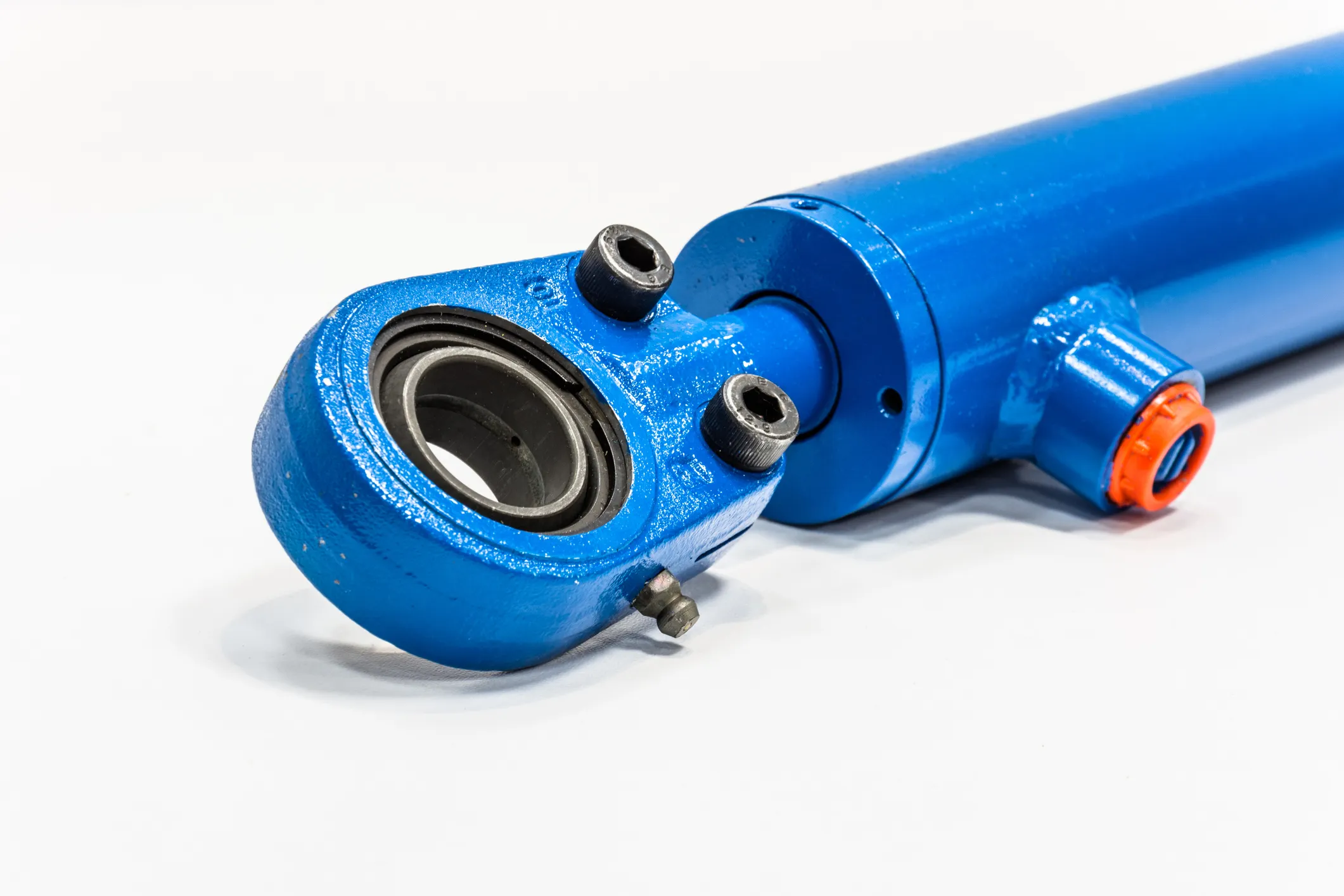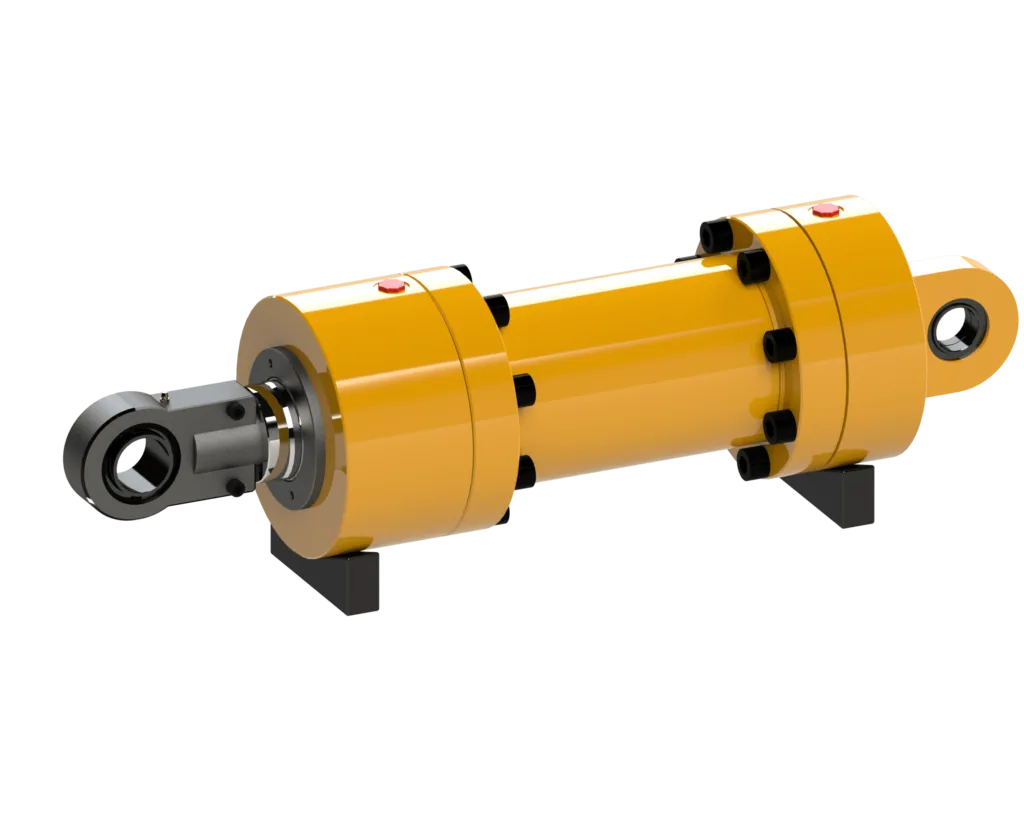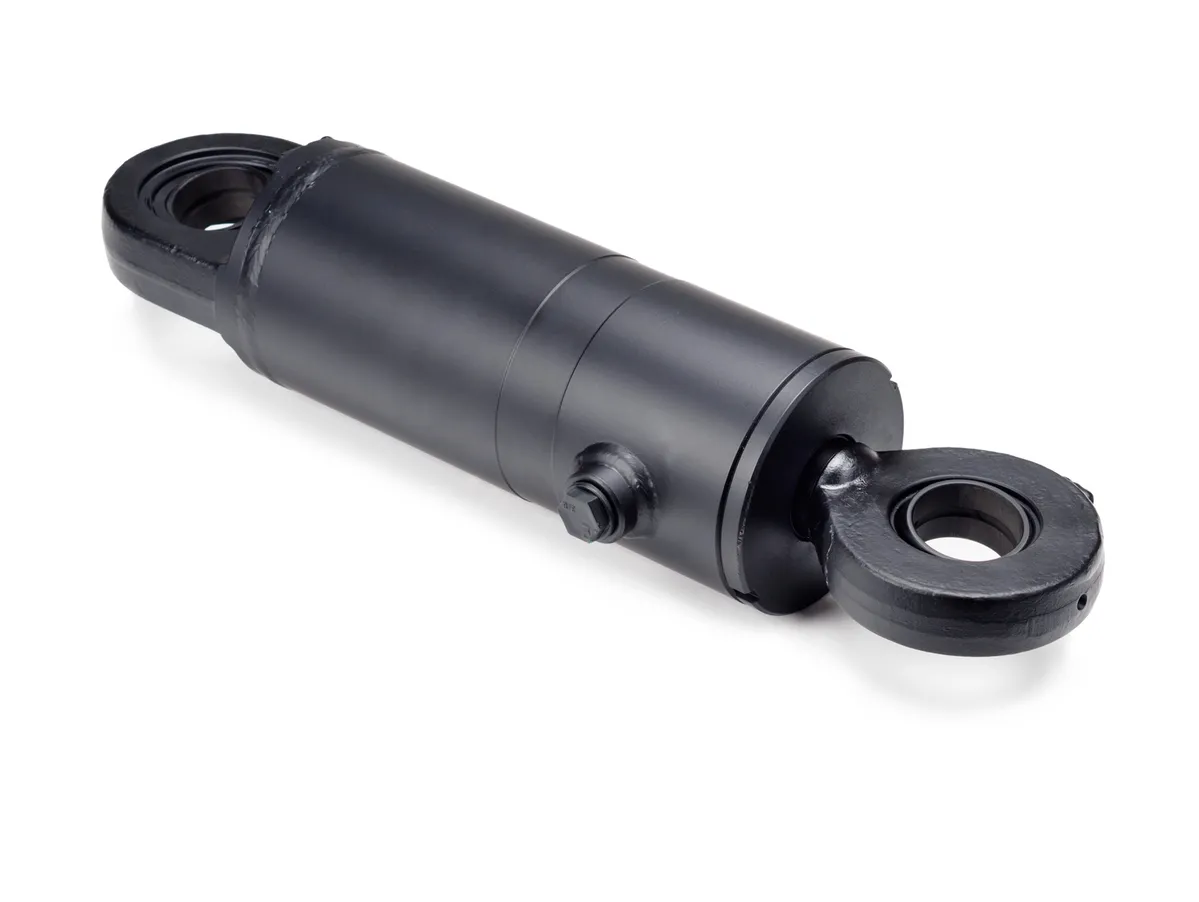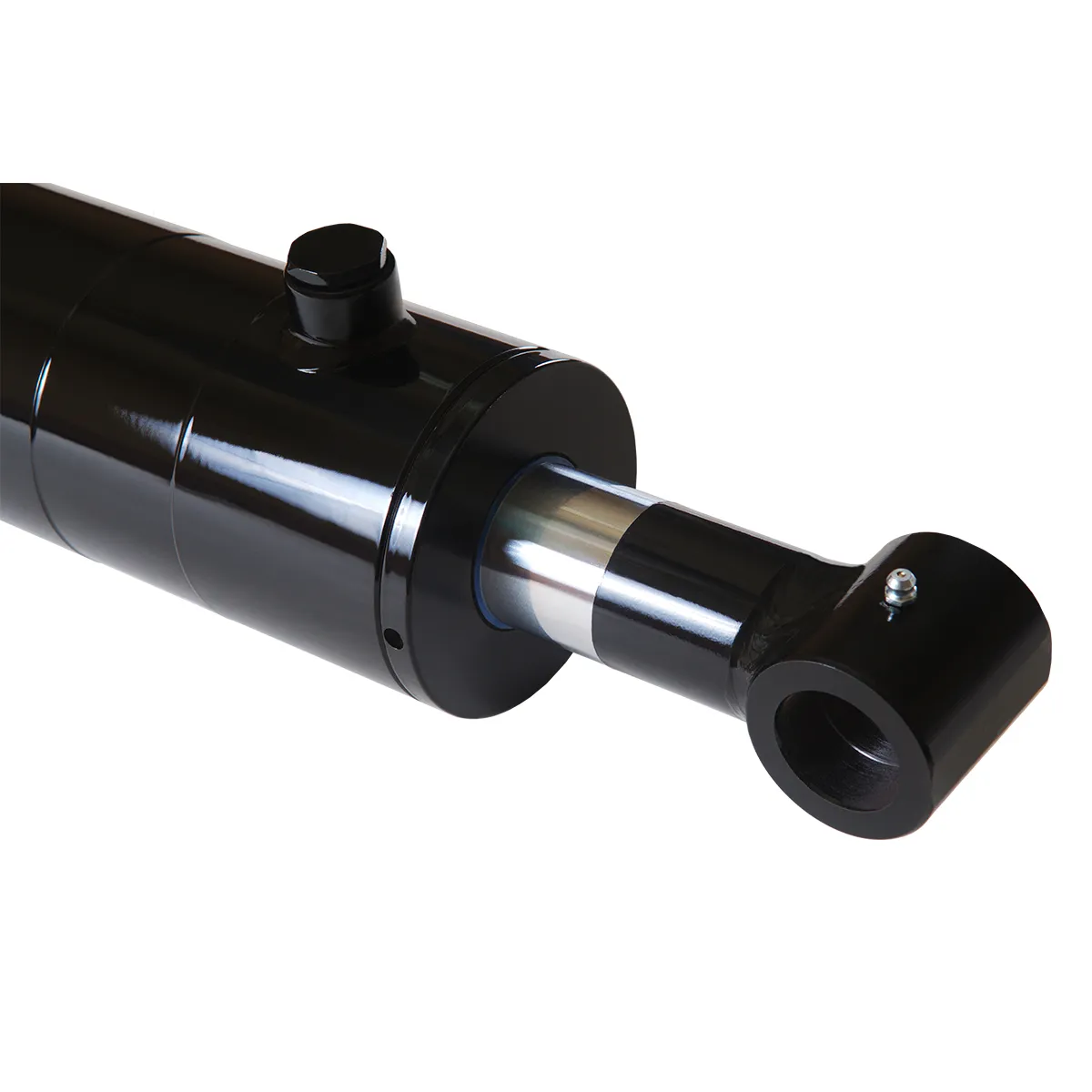Mill-Type Welded Hydraulic Cylinder: A Comprehensive Guide
Introduction to Mill-Type Welded Hydraulic Cylinder
In the realm of hydraulic systems, the mill-type welded hydraulic cylinder stands out as a crucial component that plays a significant role in various applications. These cylinders are designed with meticulous attention to detail and are tailored to meet the demands of specific industries and machinery.
Defining Mill-Type Welded Hydraulic Cylinder

Mill-type welded hydraulic cylinders are robust and durable components that are used in heavy-duty applications. They are known for their high load capacity, long stroke, and rugged durability, making them ideal for demanding industrial environments.
Principle of Mill-Type Welded Hydraulic Cylinder
The principle behind the mill-type welded hydraulic cylinder lies in its ability to convert hydraulic energy into mechanical force. This force is then used to power various types of machinery and equipment, providing the necessary strength and precision required for optimal performance.
Role and Application
Mill-type welded hydraulic cylinders find their application in a wide range of industries, including heavy equipment, industrial machinery, and mining operations. They are used in hydraulic systems to provide the necessary power and control for efficient operation.
Design Characteristics of Mill-Type Welded Hydraulic Cylinder
When it comes to the design of mill-type welded hydraulic cylinders, several key components need to be considered to ensure their strength, durability, and performance. Let’s delve into the design intricacies of these essential hydraulic components:
Shell Design
The outer shell of the mill-type welded hydraulic cylinder is meticulously engineered to withstand high pressures and heavy loads. It provides the structural integrity required to support the internal components and ensure optimal performance.
Inner Cylinder and Piston Design
The inner cylinder and piston play a crucial role in the functioning of the hydraulic cylinder. They are designed to move smoothly within the cylinder, creating the necessary pressure and force to power the machinery effectively.
Manufacturing Process and Welding Technology
The manufacturing process of mill-type welded hydraulic cylinders involves precision welding techniques to ensure the components are seamlessly integrated. Welding technology plays a vital role in enhancing the strength and durability of the cylinder, making it capable of withstanding demanding operating conditions.
Working Principle of Mill-Type Welded Hydraulic Cylinder
The working principle of the mill-type welded hydraulic cylinder revolves around the conversion of hydraulic energy into mechanical force. When pressurized hydraulic fluid enters the cylinder, it forces the piston to move, generating the necessary power to drive machinery and equipment.
Types of Mill-Type Welded Hydraulic Cylinder
There are three main types of mill-type welded hydraulic cylinders available, each with its unique configurations and applications:
Single-Acting Cylinder
The single-acting cylinder operates in one direction, using hydraulic pressure to extend or retract the piston. It is commonly used in applications where a single direction of force is required.
Double-Acting Cylinder
The double-acting cylinder can apply force in both directions, allowing for more precise control over the movement of the piston. It is suitable for applications that require bi-directional force and movement.
Telescopic Cylinder
The telescopic cylinder consists of multiple nested cylinders that extend and retract to provide varying stroke lengths. It is used in applications where space constraints require a compact design with an extended reach.
Advantages of Mill-Type Welded Hydraulic Cylinder
Mill-type welded hydraulic cylinders offer several advantages that make them indispensable in various industries:
High Load Capacity
These cylinders can withstand heavy loads and operate efficiently under high-pressure conditions, making them ideal for demanding applications.
Long Stroke
The long stroke capabilities of mill-type welded hydraulic cylinders allow for precise control over the movement of machinery, ensuring accurate positioning and operation.
Rugged Durability
Designed to withstand harsh operating environments, these cylinders are built to last and deliver consistent performance over an extended period.
Performance Characteristics of Mill-Type Welded Hydraulic Cylinder
Understanding the performance characteristics of mill-type welded hydraulic cylinders is essential for selecting the right components for specific applications:
Working Pressure and Range
Mill-type welded hydraulic cylinders are rated for specific working pressures and pressure ranges, ensuring they can handle the demands of the application without compromising performance.
Load Capacity and Responsiveness
Factors such as load capacity and responsiveness play a crucial role in determining the suitability of the cylinder for a particular application. It is essential to consider these factors when selecting the right cylinder size and configuration.
Selection Criteria
Choosing the right mill-type welded hydraulic cylinder involves considering various factors, including the application requirements, operating conditions, and environmental factors. Selecting the optimal cylinder size and configuration is vital for ensuring optimal performance and longevity.
Industries Using Mill-Type Welded Hydraulic Cylinders
Mill-type welded hydraulic cylinders are widely used across various industries, including:
Heavy Equipment
From construction machinery to agricultural equipment, mill-type welded hydraulic cylinders are essential components that provide the necessary power and control for heavy-duty applications.
Industrial Machinery
In industrial settings, these cylinders are used in manufacturing processes, material handling equipment, and automation systems to ensure smooth and efficient operation.
Mining Operations
In the mining industry, mill-type welded hydraulic cylinders are used in drilling equipment, excavators, and other machinery to withstand the harsh conditions and heavy loads encountered in mining operations.
Design Considerations and Selection Criteria
When selecting and designing mill-type welded hydraulic cylinders, several factors need to be considered to ensure optimal performance and longevity:
Bearing Capacity
The bearing capacity of the cylinder determines its ability to withstand heavy loads and operate efficiently under high-pressure conditions. It is essential to choose a cylinder with the appropriate bearing capacity for the application.
Sealing and Durability
Proper sealing is crucial for preventing leaks and ensuring the longevity of the cylinder. Durable materials and robust construction are essential for withstanding the demands of the application and ensuring reliable performance.
Safety and Maintainability
Ensuring the safety of the hydraulic system and the ease of maintenance are critical considerations when designing mill-type welded hydraulic cylinders. Regular maintenance and inspections are essential for preventing breakdowns and ensuring optimal performance.
Sealing and Lubrication of Mill-Type Welded Hydraulic Cylinders
Proper sealing and lubrication are essential for maintaining the performance and longevity of mill-type welded hydraulic cylinders:
Sealing Materials
Various seals, including piston seals, rod seals, and wear-resistant materials, are used to prevent leaks and ensure the efficient operation of the cylinder. Choosing the right sealing materials is crucial for preventing downtime and reducing maintenance costs.
Lubrication
Regularly lubricating the cylinder components with the appropriate hydraulic oil is essential for reducing friction, preventing wear, and ensuring smooth operation. Proper lubrication enhances the performance and longevity of the cylinder.
Inspection and Maintenance
Regular inspection and preventive maintenance are essential for extending the service life of mill-type welded hydraulic cylinders:

Inspection
Regular inspections help identify potential issues early, preventing costly repairs and downtime. Inspecting the cylinder components, seals, and connections ensures optimal performance and reliability.

Preventive Maintenance
Implementing preventive maintenance measures, such as seal replacements, lubrication, and calibration inspections, helps minimize the risk of breakdowns and ensures the continued operation of the hydraulic system. Preventive maintenance is key to maximizing the service life of the cylinder.
Installation Guide for Mill-Type Welded Hydraulic Cylinder
Proper installation is crucial for ensuring the optimal performance and longevity of mill-type welded hydraulic cylinders:
Ensure the cylinder is securely mounted and aligned with the machinery or equipment.
Connect the hydraulic lines according to the manufacturer’s specifications.
Test the cylinder for leaks, proper functionality, and alignment before putting it into service.
Maintenance Tasks for Mill-Type Welded Hydraulic Cylinder
Implementing regular maintenance tasks is essential for maximizing the service life and performance of mill-type welded hydraulic cylinders:
Regular Inspection
Periodic inspections help identify potential issues early and prevent costly repairs. Inspecting the cylinder components, seals, and connections ensures optimal performance.
Proper Lubrication
Regularly lubricating the cylinder components with the appropriate hydraulic oil reduces friction and wear, ensuring smooth operation and longevity.
Seal Replacement and Calibration Inspection
Replacing worn seals and performing calibration inspections are essential for maintaining the performance and reliability of the cylinder. Proper seal replacement and calibration help prevent leaks and ensure optimal operation.
Safety Considerations and Environmental Factors
Ensuring safety measures are in place when using mill-type welded hydraulic cylinders is essential for protecting personnel and equipment:
Follow all safety guidelines and precautions when operating hydraulic machinery.
Regularly inspect the hydraulic system for leaks, wear, and damage.
Dispose of hydraulic fluids and components in an environmentally friendly manner.
Fault Diagnosis and Common Problems
Diagnosing faults and addressing common problems in mill-type welded hydraulic cylinders is essential for maintaining optimal performance:
Leakage
Identifying and addressing leaks in the cylinder seals and connections is crucial for preventing fluid loss and maintaining the efficiency of the hydraulic system.
Performance Issues
Addressing performance issues, such as slow operation or erratic movement, requires thorough diagnosis and troubleshooting to identify and resolve the root cause of the problem.

Seal Wear
Regularly inspecting and replacing worn seals helps prevent leaks and ensures the proper functioning of the hydraulic cylinder. Proper seal maintenance is essential for preventing downtime and costly repairs.
Questions and Answers about Mill-Type Welded Hydraulic Cylinder
Here are answers to some common questions about mill-type welded hydraulic cylinders:
What are the advantages of mill-type welded hydraulic cylinders?
Mill-type welded hydraulic cylinders offer high load capacity, long stroke capabilities, and rugged durability, making them ideal for demanding industrial applications.
What are the main components of a mill-type welded hydraulic cylinder?
The main components of a mill-type welded hydraulic cylinder include the shell, inner cylinder, piston, seals, and connections, all of which work together to convert hydraulic energy into mechanical force.
How do mill-type welded hydraulic cylinders differ from other types?
Mill-type welded hydraulic cylinders are known for their robust construction, high load capacity, and long stroke capabilities, making them suitable for heavy-duty applications that require precise control and durability.
What maintenance is required for mill-type welded hydraulic cylinders?
Regular inspection, proper lubrication, seal replacement, and calibration inspection are essential maintenance tasks that help maximize the service life and performance of mill-type welded hydraulic cylinders.
Long Tail Keywords for Mill-Type Welded Hydraulic Cylinder
Here are three long tail keywords related to mill-type welded hydraulic cylinders:
1. “High load capacity mill-type welded hydraulic cylinder”
2. “Rugged durability mill-type welded hydraulic cylinder”
3. “Long stroke capabilities mill-type welded hydraulic cylinder”
Our Company
We are a leading hydraulic cylinder replacement manufacturer with a diverse product line catering to various industries. Our commitment to quality, innovation, and customer satisfaction has made us a trusted partner in the domestic and international markets.
Our company stands out for its professional approach, international certifications, customized services, state-of-the-art production equipment, and comprehensive after-sales support. We strive to exceed customer expectations and deliver high-quality hydraulic solutions that meet the most demanding requirements.
Author: lyl
